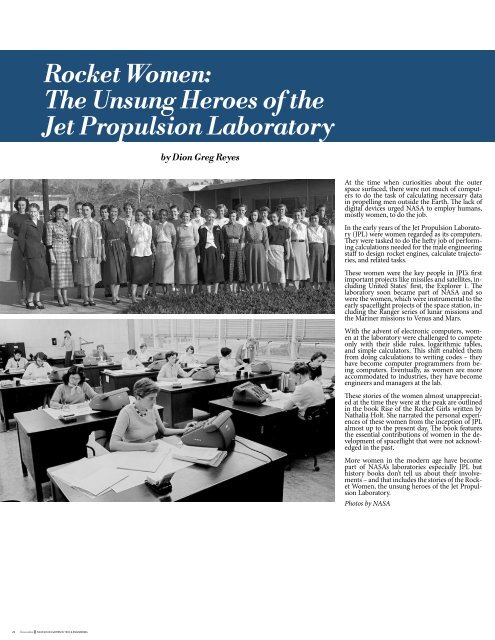GineersNow Engineering News Magazine Issue 3
May 2016 Issue No. 003 Women in Technology and Engineeirng featuring supermodel Karlie Kloss. Exclusive interviews: Engineering for Kids, Girls Who Code, Ladies Learning Code, Robomatter, Stemettes, Women Who Code. Special feature stories: Construction, HVAC, oil & gas, petrochemicals, renewables, green energy, information technology, wearable tech, water and wastewater, industrial digitalization, civil, mechanical, electrical, MEP, contracting, mining, electronics, BIM, safety, chemical, aviation, heavy equipment, machineries, software, gadgets and robotics. https://www.gineersnow.com/topics/magazines
May 2016 Issue No. 003
Women in Technology and Engineeirng featuring supermodel Karlie Kloss.
Exclusive interviews: Engineering for Kids, Girls Who Code, Ladies Learning Code, Robomatter, Stemettes, Women Who Code.
Special feature stories: Construction, HVAC, oil & gas, petrochemicals, renewables, green energy, information technology, wearable tech, water and wastewater, industrial digitalization, civil, mechanical, electrical, MEP, contracting, mining, electronics, BIM, safety, chemical, aviation, heavy equipment, machineries, software, gadgets and robotics.
https://www.gineersnow.com/topics/magazines
Create successful ePaper yourself
Turn your PDF publications into a flip-book with our unique Google optimized e-Paper software.
28 ISSUE NO.003 WOMEN IN TECH & ENGINEERING<br />
Rocket Women:<br />
The Unsung Heroes of the<br />
Jet Propulsion Laboratory<br />
by Dion Greg Reyes<br />
At the time when curiosities about the outer<br />
space surfaced, there were not much of computers<br />
to do the task of calculating necessary data<br />
in propelling men outside the Earth. The lack of<br />
digital devices urged NASA to employ humans,<br />
mostly women, to do the job.<br />
In the early years of the Jet Propulsion Laboratory<br />
(JPL) were women regarded as its computers.<br />
They were tasked to do the hefty job of performing<br />
calculations needed for the male engineering<br />
staff to design rocket engines, calculate trajectories,<br />
and related tasks.<br />
These women were the key people in JPL’s first<br />
important projects like missiles and satellites, including<br />
United States’ first, the Explorer 1. The<br />
laboratory soon became part of NASA and so<br />
were the women, which were instrumental to the<br />
early spaceflight projects of the space station, including<br />
the Ranger series of lunar missions and<br />
the Mariner missions to Venus and Mars.<br />
With the advent of electronic computers, women<br />
at the laboratory were challenged to compete<br />
only with their slide rules, logarithmic tables,<br />
and simple calculators. This shift enabled them<br />
from doing calculations to writing codes – they<br />
have become computer programmers from being<br />
computers. Eventually, as women are more<br />
accommodated to industries, they have become<br />
engineers and managers at the lab.<br />
These stories of the women almost unappreciated<br />
at the time they were at the peak are outlined<br />
in the book Rise of the Rocket Girls written by<br />
Nathalia Holt. She narrated the personal experiences<br />
of these women from the inception of JPL<br />
almost up to the present day. The book features<br />
the essential contributions of women in the development<br />
of spaceflight that were not acknowledged<br />
in the past.<br />
More women in the modern age have become<br />
part of NASA’s laboratories especially JPL but<br />
history books don’t tell us about their involvements<br />
– and that includes the stories of the Rocket<br />
Women, the unsung heroes of the Jet Propulsion<br />
Laboratory.<br />
Photos by NASA


















